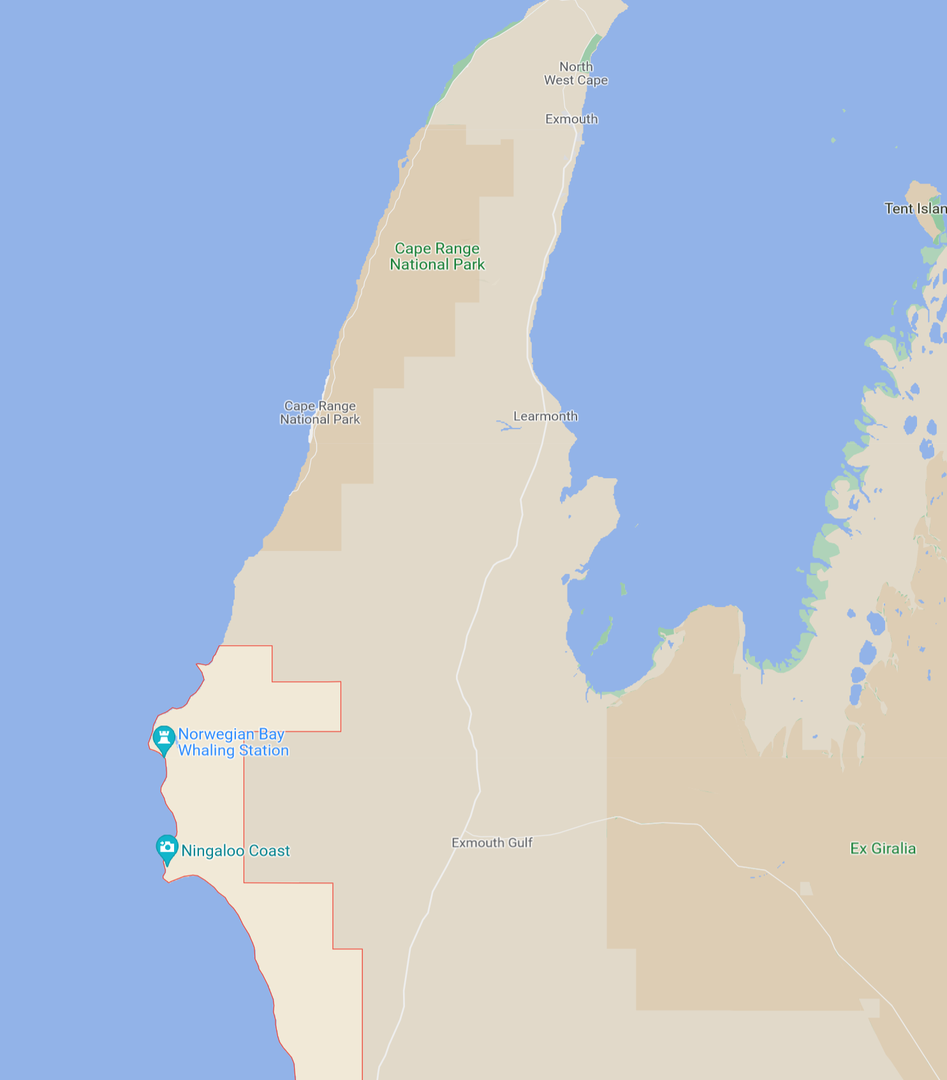Ningaloo
Explore the reef
Step off one of the countless white sandy beaches and enjoy the pristine waters of Ningaloo Marine Park. Stretching more than 300km from the North West Cape to the Red Bluff, Ningaloo Reef is the largest and most accessible fringing coral reef in Australia.
The shallow lagoon, fringing reef and deeper offshore waters provide an array of habitats supporting a multitude of colourful corals, more than 500 species of fish and globally important and threatened mega marine fauna including whale sharks, turtles, dugongs, dolphins, manta rays, humpback whales and orcas.
Snorkel one of the many snorkel sites along the Ningaloo Coast straight off the beach. Lakeside, Turquoise Bay and Oyster Stacks can be accessed from Cape Range National Park. Enjoy exploring the coral gardens of the sheltered waters of Bill’s Bay in Coral Bay.
Venture further from shore and combine a kayak with a snorkel. Kayak moorings can be accessed from Bundegi Beach, Tantabiddi, Osprey Bay and Coral Bay.
Mega marine life
Each year from March to early August whale sharks aggregate in the marine park. Tours allowing people the opportunity to snorkel with these gentle giants leave from Tantabiddi and Coral Bay. Visit the Ningaloo Visitor Centre for more information.
Humpback whales can be seen travelling north and south during their annual migration from June to November. Lookouts at Bloodwood Creek, Hunters, and Vlaming Head Lighthouse are ideal spots to view humpbacks as they pass by.
Three species of marine turtles (green, hawksbill and loggerhead) are regularly encountered in the waters of Ningaloo Marine Park year-round. Peak nesting occurs during the summer months when females come ashore and to lay their eggs on beaches of the Ningaloo Coast.
Surfing and Fishing
Surfing along the Ningaloo Coast is popular activity for both locals and visitors. Dunes Surf Beach, Hunters and Wobiri are located in the north or Ningaloo Marine Park and Red Bluff and Tombstones are to the south along the Gnaraloo and Quobba Coast.
Ningaloo Marine Park is a popular destination for recreational fishing. The marine park is divided into a number of zones not only to conserve fish populations and habitat but also to allow visitors to responsibly enjoy a great fishing experience. For information download the Ningaloo Coast World Heritage Area map for Marine Park Zoning and activities permitted in these zones or visit the Fisheries website .
Marine Parks WA App is available free for iso and android devices. The ‘where am I? function shows where you are and what activities you can enjoy in that area, even when you are offline or out of range.
Boating
Is a great way to see and enjoy the Ningaloo Reef.
Please remember:
- Slow down when approaching coral areas. Never cut across coral formations as water depth changes with tides and you may damage the coral.
- Anchor on sand.
- Please follow the relevant interaction protocol or code of conduct when interacting with marine wildlife - whale sharks, humpback whales.
- There are major boat launching facilities at Bundegi, Tantabiddi and Coral Bay.
Your
safety
| It’s great to escape everyday life and visit a park or reserve in WA. It is also important to us that you return safely to your family and friends. | It is really important to plan when to visit. For your safety we have provided safety information about swimming, fishing, snorkelling, diving, paddling and kayaking, and surfing. Consider traveling with a personal location beacon (PLB). In the event you need to be rescued it could save your life! | Always be aware of your surroundings and pay attention to visitor risk warning signs. Hazard warning signs are placed there for your protection and safety. |
Cultural significance
Baiyungu, Thalanyji and Yinikurtura Traditional Owners were predominantly coastal dwelling people who have a strong connection to the thanardi (sea) and Nyinggulu (Ningaloo) Coast spanning over 30,000 years. Today, traditional owners together with Parks and Wildlife Service embark on a journey to jointly manage thanardi country through the development of the Nyinggulu Joint Management Body.
Commonwealth waters
The Ningaloo Marine Park (Commonwealth waters) borders the western edge of the State marine park covering 2435 square kilometres, with water depths ranging from 30m to more than 500m. The park has a variety of seafloor habitats, including the continental shelf and undersea canyons, as well as open ocean (pelagic) waters. The deeper waters are dominated by sponge gardens, soft corals and algae as well as diverse communities of demersal (bottom-living) fish. The highly productive open waters above attract seabirds, whale sharks and schools of mackerel, tuna and trevally. Humpback whales pass through twice a year on their annual migration. Ningaloo also supports feeding areas for pygmy blue whales, while other species sighted have included blue, sperm, dwarf minke and Bryde’s whales and orcas. Further to the west lies Gascoyne Marine Park.

No comments yet. Login to start a new discussion Start a new discussion